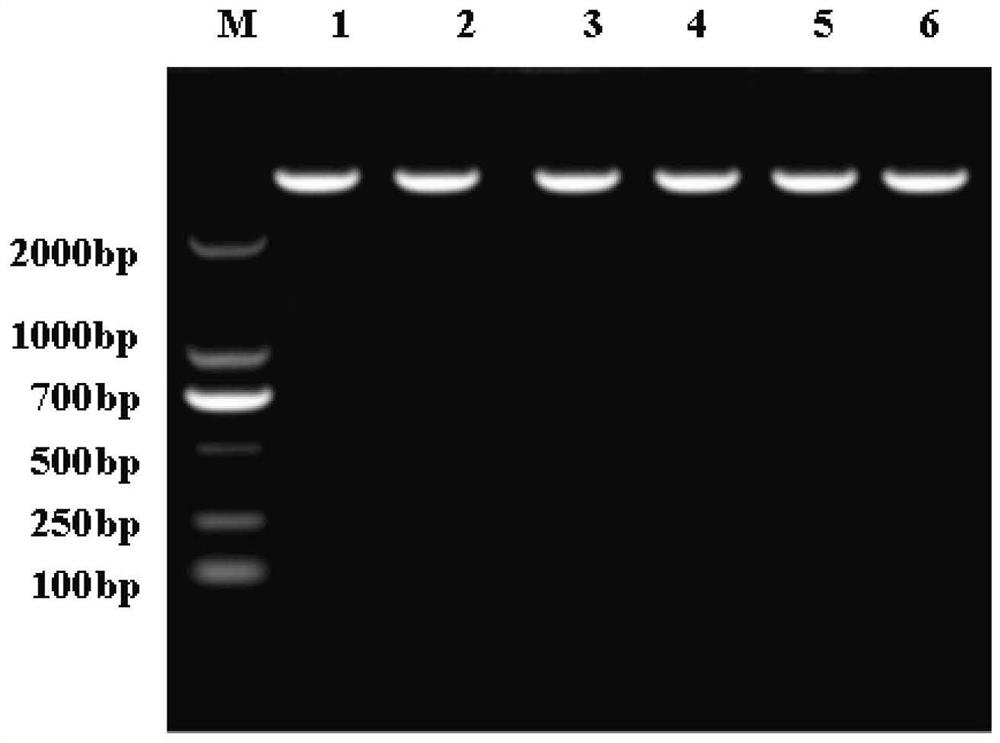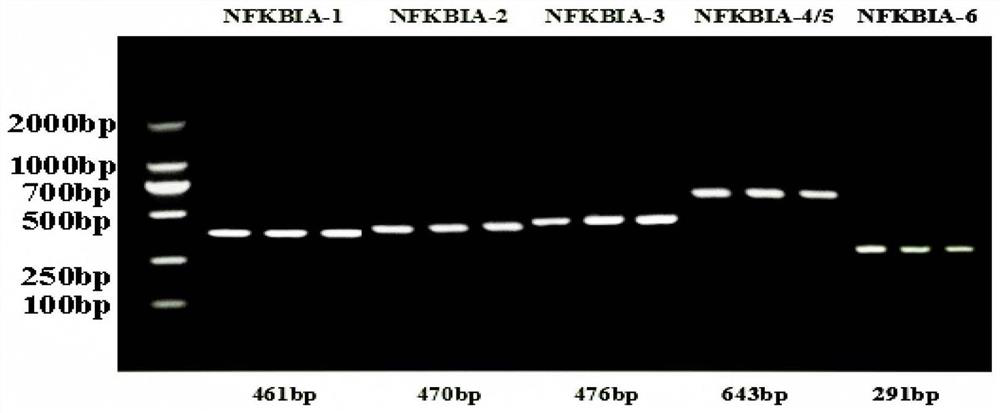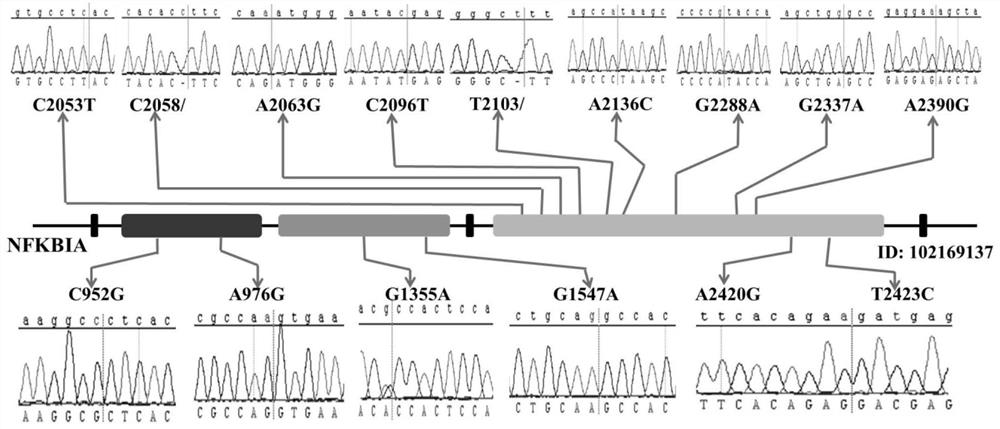Molecular markers related to cashmere fineness traits and their detection primers and applications
A technology of molecular markers and detection primers, which is applied in biochemical equipment and methods, microbe determination/inspection, DNA/RNA fragments, etc., can solve the problem of undiscovered cashmere fineness, and achieve the effect of improving the poor quality of cashmere
- Summary
- Abstract
- Description
- Claims
- Application Information
AI Technical Summary
Problems solved by technology
Method used
Image
Examples
Embodiment 1
[0023] This embodiment provides a molecular marker related to the fineness of cashmere, which includes the G1355A site of the cashmere goat NFKBIA gene; the nucleotide sequence of the molecular marker is shown in SEQ ID NO: 1 in the sequence table, specifically: : ACRCCACTCCACTTGGCTG; wherein, the G1355A site is the R position in the nucleotide sequence, and its base is A or G; the AG genotype of the G1355A site can be used for the selection of fine cashmere goats.
[0024] In addition, this embodiment also provides a detection primer for detecting the above-mentioned molecular marker, specifically, the detection primer includes five sets of primer pairs, specifically, the detection primer is used to detect the detection primer according to claim 1 or 2. Molecular marker; the detection primers include at least one of NFKBIA-1 primer pair, NFKBIA-2 primer pair, NFKBIA-3 primer pair, NFKBIA-4 / 5 primer pair and NFKBIA-6 primer pair; the NFKBIA-1 The nucleotide sequences of the pr...
Embodiment 2
[0029] This embodiment provides a method for detecting mutation sites in cashmere goat NFKBIA gene using the above-mentioned detection primers, comprising the following steps:
[0030] S1. Obtain the DNA of the cashmere goat to be detected, and obtain a DNA template;
[0031] S2, performing PCR amplification on the detection primer and the DNA template to obtain a PCR amplification product;
[0032] S3, the PCR amplification product is sequenced to obtain a sequenced gene sequence;
[0033] S4. Compare the sequenced gene sequence with the cashmere goat NFKBIA standard gene sequence to obtain the mutation site in the cashmere goat NFKBIA gene to be detected.
[0034] Specifically, in practical applications, the above method can be used in the experiment of finding marker genotypes related to the economic traits of Liaoning cashmere cashmere fineness, and the experimental method can include the following steps:
[0035](1) In the cashmere goat breeding farm in Liaoyang City, L...
PUM
 Login to View More
Login to View More Abstract
Description
Claims
Application Information
 Login to View More
Login to View More - R&D
- Intellectual Property
- Life Sciences
- Materials
- Tech Scout
- Unparalleled Data Quality
- Higher Quality Content
- 60% Fewer Hallucinations
Browse by: Latest US Patents, China's latest patents, Technical Efficacy Thesaurus, Application Domain, Technology Topic, Popular Technical Reports.
© 2025 PatSnap. All rights reserved.Legal|Privacy policy|Modern Slavery Act Transparency Statement|Sitemap|About US| Contact US: help@patsnap.com



